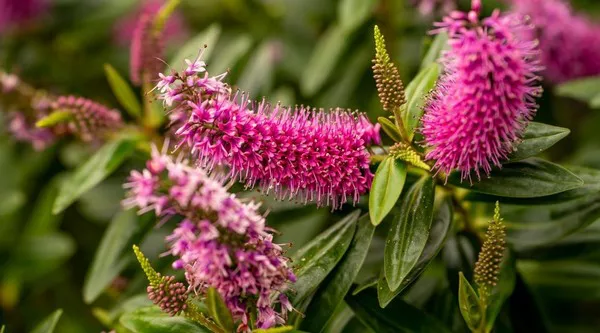Passiflora, commonly known as passionflowers, are a diverse group of beautiful and exotic flowering plants renowned for their striking blossoms and unique structures. The captivating beauty of these flowers often raises questions about their lifespan and the factors that influence their longevity. In this article, we will explore how long passiflora flowers typically last, the different stages of their life cycle, and the key factors that can impact their longevity. Additionally, we will delve into the cultural and symbolic significance of passionflowers across various societies.
1. Lifespan of Passiflora Flowers
Flowering Duration
The lifespan of passiflora flowers can vary depending on the species and environmental conditions. On average, individual passionflowers bloom for about two to five days, with some species exhibiting blooms that last up to a week. However, it is essential to note that the entire flowering period of a passionflower plant can be much longer, as new blooms can continue to emerge throughout the growing season.
Diurnal Blooming Habit
Passiflora flowers are diurnal, meaning they open during the day and close at night. The blooms typically begin to open in the morning and reach their full splendor by mid-day. As the sun sets, the flowers gradually close, often releasing a pleasant fragrance.
2. Factors Influencing Flower Longevity
Environmental Conditions
Passionflowers are sensitive to environmental factors, and their longevity can be influenced by the prevailing weather conditions. Extended periods of rain, extreme heat, or strong winds may shorten the lifespan of the flowers. Conversely, moderate temperatures, ample sunlight, and consistent moisture can help extend their bloom duration.
Plant Health and Nutrition
Healthy, well-nourished passionflower plants are more likely to produce sturdy and long-lasting blooms. Adequate nutrients, such as phosphorus, potassium, and magnesium, are essential for flower development and overall plant vitality.
Pollination and Fertilization
Successful pollination and fertilization are critical for the longevity of passiflora flowers. In the absence of pollination, the flowers may fade and drop prematurely. Bees and other pollinators play a crucial role in this process, facilitating the transfer of pollen from one flower to another.
3. Stages of the Passiflora Flower Life Cycle
Bud Formation
The life cycle of a passiflora flower begins with the emergence of buds on the vine. These buds hold the promise of the exquisite flowers that will soon grace the plant.
Flower Opening
As the buds mature, they start to unfurl, revealing the intricate and striking structure of the passionflower. The process of opening can occur quite rapidly, and once fully open, the flowers are at their most vibrant and alluring state.
Flowering Period
The flowering period is when the passionflower is in full bloom, displaying its radiant colors and intricate patterns. This is the stage where pollination takes place, and the plant begins its reproductive phase.
Flower Fading and Senescence
As the flowering period comes to an end, the passionflower petals gradually lose their brilliance and may start to wither. This natural aging process, known as senescence, is a part of the flower’s life cycle.
Fruit Development
After successful pollination, the passionflower undergoes fruit development. The ovary of the flower enlarges and matures into the well-known edible fruit, known as the passion fruit.
4. Cultural and Symbolic Significance of Passionflowers
Historical Significance
Passionflowers have a rich history dating back to ancient civilizations. The name “passionflower” originates from Christian missionaries, who saw symbolic representations of the crucifixion of Jesus in the various parts of the flower. The five sepals and five petals were associated with the ten apostles present at the crucifixion (excluding Judas and Peter), the corona represented the crown of thorns, and the three stigmas symbolized the nails.
Medicinal and Culinary Uses
Passionflowers have been used for various medicinal purposes in traditional medicine. They were believed to possess calming and sedative properties, and extracts from the plant were used to alleviate anxiety and insomnia. Additionally, the passion fruit derived from the flower’s ovary is known for its delicious taste and nutritional benefits.
Aesthetic and Decorative Use
Passionflowers’ captivating beauty has made them a popular choice in gardens, parks, and floral arrangements. Their unique appearance adds a touch of exotic elegance to landscapes and floral displays, making them a favorite among gardeners and florists alike.
Conclusion
Passiflora flowers, with their stunning beauty and fascinating life cycle, continue to captivate plant enthusiasts and symbolize diverse meanings across different cultures. While the individual blooms may only last for a few days, their overall contribution to the ecosystem and the joy they bring to those who admire them is immeasurable. Understanding the factors that influence their longevity and appreciating their cultural significance add to the allure of these enchanting flowers, making them a cherished addition to any garden or floral arrangement.


